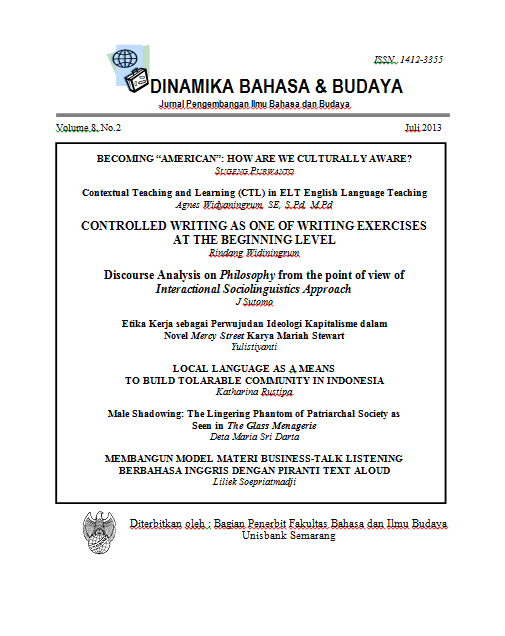Contextual Teaching and Learning (CTL) in ELT English Language Teaching
Abstract
ELT in Indonesia has a differentposition in the latest curriculum published by the government. This is due tothe students’ interest that is varied and their interest is arranged into a newprogram structure in the curriculum. The students can choose their own interestwhen they are on the ninth grade. For some reasons proposed by some scholarswhom are experts in education, they say that approaching to be a part of globalcommunity, Indonesia should produce students who have good English literacy. Ifthe latest curriculum is implemented by every school in Indonesia, there willbe a significant result concerning to the human resource quality of Indonesia.The government as the policy makers should involve teachers in the process ofcurriculum development but in reality the teachers are not involved in theprocess. The students will be victimized by the new curriculum. We can learnfrom the statement delivered by the policy makers that English is a terrifyingsubject for students without giving any proof to support their opinion. Whatthey said is not scientifically true as they demand that English is just alocal content in the curriculum. As a lecturer, I try to propose a newperspective that can help teachers to teach English without any doubt due tothe position of English subject in the curriculum. The idea is about CTL(Contextual Teaching and Learning) in ELT (English Language Teaching). This isnot a new idea but just a new perspective to proof that somehow we should havegoo English literacy.Keywords : CTL, ELT, curriculum
Published
2013-07-01
How to Cite
Widyaningrum, A. (2013). Contextual Teaching and Learning (CTL) in ELT English Language Teaching. Dinamika Bahasa Dan Budaya, 8(2), 11 - 21. https://doi.org/10.35315/bb.v8i2.2049
Issue
Section
Articles
The copyright of the received article shall be assigned to the journal as the publisher of the journal. The intended copyright includes the right to publish the article in various forms (including reprints). The journal maintains the publishing rights to the published articles.










